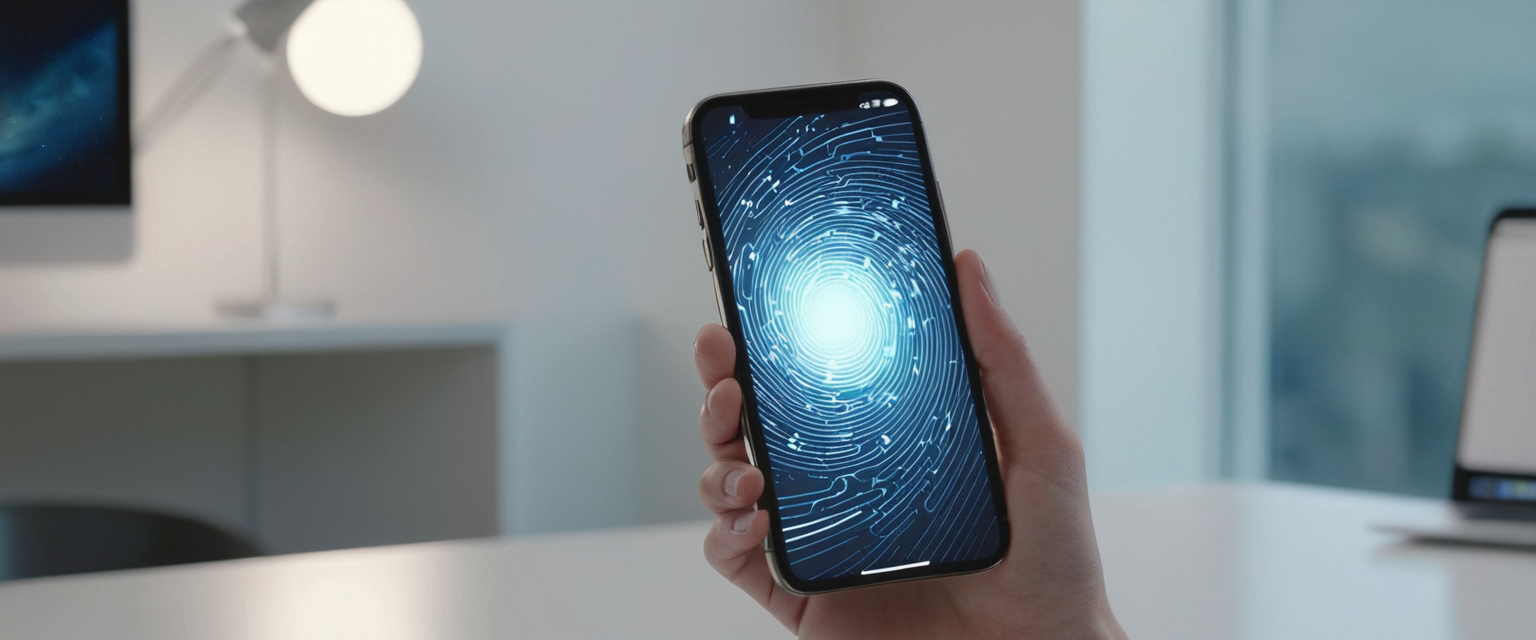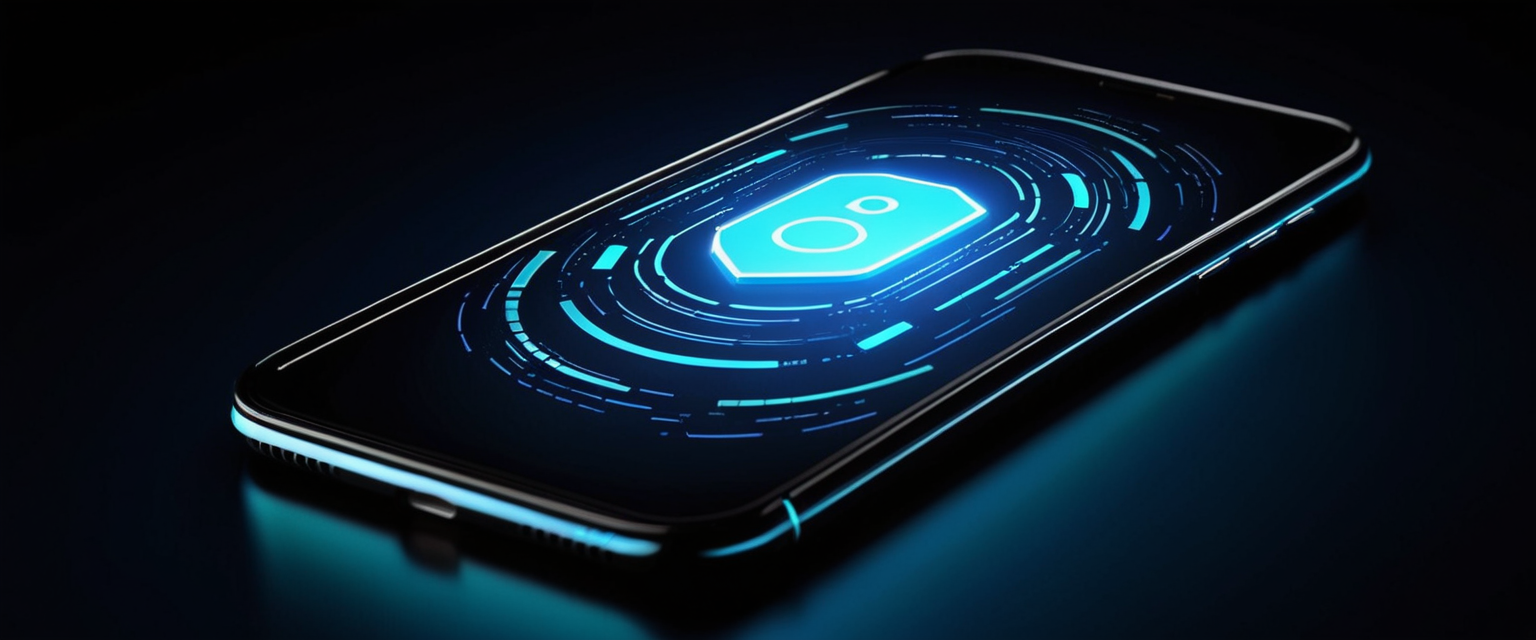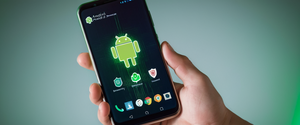
While iPhones are renowned for their robust security architecture, they remain vulnerable to sophisticated malware threats despite common misconceptions about their impermeability. Understanding how to properly check for malware on an iPhone requires grasping the fundamental distinctions between traditional computer viruses and iOS-specific threats, recognizing the warning signs that indicate compromise, and implementing both detection and prevention strategies that align with the unique architecture of Apple’s operating system. This comprehensive report examines the landscape of iPhone malware threats, provides detailed guidance on detection methodologies, and outlines practical remediation procedures that users can employ to maintain device security and protect their personal data from unauthorized access and surveillance.
Understanding iPhone Security Architecture and Malware Vulnerability
The iPhone’s security model differs fundamentally from traditional computing environments, which creates both exceptional protections and unique vulnerabilities that require specialized understanding. Apple’s walled-garden approach, combined with app sandboxing and a carefully curated App Store, substantially reduces the risk of mass-market malware infections that plague other platforms. However, the distinction between traditional viruses and other forms of malware is crucial when discussing iPhone security, as iPhones cannot get “viruses” in the classical sense where malicious code replicates itself across application boundaries. The sandboxing architecture means that each application operates in its own isolated environment with restricted access to system resources and other applications’ data, preventing the horizontal spread of infection that characterizes traditional viruses. Despite this architecture, iPhones remain vulnerable to various forms of malware including phishing attacks, malicious configuration profiles, spyware, stalkerware, and sophisticated zero-click exploits that require no user interaction.
The landscape of iPhone threats has evolved significantly, particularly with recent discoveries of advanced attack vectors that exploit previously unknown vulnerabilities in critical system frameworks. In 2025, Apple patched zero-day vulnerability CVE-2025-43300 in the Image I/O framework, which could allow attackers to achieve code execution through specially crafted image files. This vulnerability was part of a sophisticated attack chain that combined with other exploits to compromise devices without any user action, representing a concerning evolution in mobile threat methodology. Similarly, sophisticated surveillance campaigns like Operation Triangulation and the long-running Pegasus spyware have demonstrated that highly targeted attacks can compromise iPhones even when running current software versions. These threats are typically aimed at specific, high-profile individuals rather than the general user population, but they illustrate that no device is completely immune to compromise.
The effectiveness of iOS security features stems from multiple layers of protection working in concert. Apple’s App Store review process, while imperfect, significantly reduces the likelihood of obviously malicious applications reaching users. The requirement that all applications be code-signed by Apple and the verification of these signatures at runtime create barriers to installing unauthorized code. The Address Space Layout Randomization (ASLR) feature makes memory-based exploits substantially more difficult by randomizing memory addresses on each device. The Execute Never feature prevents certain memory regions from being executed, limiting the effectiveness of memory corruption exploits. Additionally, Apple’s regular security updates address newly discovered vulnerabilities, though the effectiveness depends on users promptly installing these updates.
However, certain circumstances can substantially compromise iPhone security and create pathways for malware infection. Jailbreaking an iPhone removes Apple’s built-in security features and allows installation of unauthorized applications from unofficial sources, dramatically increasing vulnerability to malware. Users who have jailbroken devices lose critical protections including automatic security updates and the ability to receive patches quickly, as jailbreak developers must develop updates for their modifications before users can access patched versions of iOS. Older iPhones that can no longer receive software updates remain vulnerable to known exploits as Apple stops issuing security patches for devices past a certain age. Phishing attacks and social engineering remain effective regardless of device type, as users can be tricked into granting permissions, entering credentials on fake websites, or installing malicious configuration profiles. The human element remains perhaps the most significant vulnerability in any security system, as even sophisticated devices can be compromised through user deception.
Recognizing Warning Signs and Symptoms of Malware Infection
Identifying potential malware on an iPhone requires vigilance and attention to behavioral changes that deviate from normal device operation. The most common warning sign users report is unexpected battery drain occurring rapidly even when the device is not actively in use. When malware runs in the background consuming processor resources, the device’s battery will deplete faster than normal as the battery must supply power to additional computational processes beyond normal operation. However, battery drain can result from many causes including degraded battery health, excessive app usage, or demanding background processes from legitimate applications, so this symptom should be evaluated in context with other indicators.
Unusual data consumption patterns represent another significant warning sign that warrants investigation. If an iPhone suddenly begins consuming substantially more cellular or Wi-Fi data without corresponding increases in usage patterns, this could indicate that malware is transmitting information from the device to attacker-controlled servers. Checking data usage statistics in the Settings application can reveal which applications are consuming excessive data, potentially identifying suspicious background activity. Users should compare current data consumption to historical patterns and investigate any unexplained increases, particularly for applications that should not require significant bandwidth.
Device overheating even during light usage or when the device is idle represents another potential indicator of malware infection. When malicious software causes the processor to work intensively in the background, the device generates excessive heat that users can feel when holding the phone. If an iPhone becomes noticeably warm or hot without obvious explanation such as extended usage, direct sunlight exposure, or running graphically demanding applications, this could suggest background processes consuming significant computational resources. Environmental factors should be considered when evaluating this symptom, as devices in hot environments or exposed to direct sunlight may naturally run warmer.
Mysterious applications appearing on the home screen or in the App Library that the user has no recollection of installing represent a serious red flag requiring immediate investigation. While iOS prevents applications from being installed without user action through the App Store (unless the device has been jailbroken), users sometimes forget applications they installed or may not recognize application names if developers use obscure titles. Checking the App Store purchase history can help determine whether an application was legitimately purchased or installed, though some applications may not appear if they have been removed from the App Store. Any application that cannot be accounted for should be investigated further and deleted if it cannot be verified as legitimate.
Performance degradation including slow response times, unexpected application crashes, and system freezes can indicate malware consuming system resources or corrupting system processes. While iOS devices typically maintain consistent performance even with heavy usage due to their efficient architecture, dramatic slowdowns may warrant investigation. However, performance issues frequently result from legitimate causes including insufficient storage space, excessive background application refresh, or degraded performance on older devices as iOS versions become heavier and more resource-intensive.
Pop-up advertisements appearing with unusual frequency, particularly in contexts where they should not occur, can indicate adware infection or malicious website redirects. While normal web browsing occasionally encounters pop-up advertisements, if a user experiences dramatically increased pop-up frequency or pop-ups appearing outside of web browsers, this suggests a problem requiring attention. Aggressive pop-ups claiming the device has been infected or offering security software from untrusted sources are particularly suspicious and should never be trusted.
More advanced threats may exhibit subtler indicators that require deeper investigation. The camera or microphone indicator dots appearing unexpectedly in the status bar indicate that an application is accessing these hardware sensors. While some applications legitimately access cameras and microphones (such as video calling or voice recording applications), unexpected access by applications that should not require these resources suggests potential surveillance. Similarly, the App Privacy Report feature can reveal which applications have recently accessed sensitive data, cameras, microphone, and location services, allowing users to identify suspicious patterns of access.

Manual Detection Methods and Built-in Tools for Identifying Malware
Fortunately, users have several practical methods to manually check for malware on their iPhones without relying on potentially ineffective third-party antivirus applications. The most straightforward approach involves checking battery usage statistics to identify applications consuming unusual amounts of power. Users can navigate to Settings, then Battery to view battery consumption by application over various time periods. By reviewing this list, users can identify applications that are consuming significant power despite minimal usage or applications that appear unfamiliar. Any application in this list that the user cannot account for should be investigated further and potentially deleted.
Examining cellular and Wi-Fi data usage provides insight into network activity and can reveal applications transmitting data suspiciously. Users can access this information by going to Settings, then Cellular (or Wi-Fi for Wi-Fi data) to view data consumption broken down by application. Comparing current usage patterns to historical norms and investigating any dramatic increases in data consumption by applications that should not require significant bandwidth helps identify potentially malicious activity. Recording baseline usage patterns periodically allows users to detect unusual spikes more readily.
The App Privacy Report feature, available in Settings under Privacy & Security, provides detailed information about how applications access sensitive data and interact with external services. This tool shows which applications have recently accessed location services, camera, microphone, contacts, photos, and other sensitive data. Users should review this report regularly to identify patterns of suspicious access, such as applications accessing the camera or microphone when they should not require these permissions or applications contacting suspicious external domains. The report also shows network activity and frequently contacted domains, helping identify whether applications are communicating with suspicious servers.
Checking for unrecognized configuration profiles and VPN settings can reveal malicious profiles that may have been installed without user knowledge. Users should navigate to Settings, then General, then scroll to find VPN & Device Management (on newer iOS versions this may be labeled differently). If any profiles appear in this section that the user did not intentionally install, these should be investigated and removed immediately as they could represent malicious attempts to intercept network traffic or install unauthorized certificates. Configuration profiles provide a vector for attackers to reroute network traffic through their servers, enabling man-in-the-middle attacks and data interception.
Protect Your Digital Life with Activate Security
Get 14 powerful security tools in one comprehensive suite. VPN, antivirus, password manager, dark web monitoring, and more.
Get Protected NowReviewing Safari browsing history and website data can help identify whether the device has visited suspicious websites or whether malicious websites are attempting to inject code. While this process cannot detect sophisticated malware, it can reveal adware directing users to unwanted websites or signs of phishing attacks. Users can clear this data entirely by going to Settings, then Safari, then Clear History and Website Data. This process removes browsing history, cookies, and cached website data that could be used for tracking or serving malicious content.
Checking hidden apps represents another manual detection method, as some threats may attempt to hide their presence by using the Hidden Apps feature in iOS. Users can access hidden apps by swiping to the last page of their App Library and looking for a “Hidden” folder if one exists. Tapping on this folder and confirming with Face ID or Touch ID will reveal any hidden applications. While legitimate reasons exist for hiding apps (such as parental controls), users should be familiar with which applications they have intentionally hidden and should investigate any hidden applications they do not recognize.
Examining the App Store purchase history can help determine whether applications were legitimately installed. Users can open the App Store app, tap the Profile icon in the upper right corner, then tap “Purchased” to view all applications they have ever downloaded. This history should match applications the user recalls installing, and any unfamiliar entries should be investigated. Applications that have been removed from the App Store may not appear in this history, but the user should still have recollection of installing them.
Unfortunately, iOS limitations mean that no built-in virus scanner exists, and third-party antivirus applications cannot scan the device comprehensively due to sandboxing restrictions. Third-party security apps can only scan within their own sandbox and cannot access other applications’ data or system-level processes, severely limiting their effectiveness. While some third-party security applications offer phishing protection, password breach monitoring, and VPN services that may provide additional security layers, these differ fundamentally from traditional antivirus scanning. For most users, the built-in manual checks outlined above provide sufficient detection capabilities.
Malware Removal Strategies and Comprehensive Recovery Procedures
When malware detection confirms or strongly suggests the presence of malicious software on an iPhone, several removal strategies exist ranging from relatively simple procedures to comprehensive device wiping. The approach selected depends on the severity of the suspected infection and whether the user can identify the source of the compromise. The initial response should always involve updating iOS to the latest available version, as Apple frequently patches vulnerabilities that malware might exploit. Users can check for updates by going to Settings, then General, then Software Update. Installing the latest iOS version closes security gaps that might be used to maintain or escalate the malware infection.
Restarting the iPhone represents a simple but often effective first step that can terminate temporary malware processes operating in memory. While restarting will not remove malware that persists on disk or in system processes, it can clear temporary infections from volatile memory and may resolve some symptoms caused by malicious background processes. A standard restart can be performed by holding the power button and sliding to power off, then turning the device back on after several seconds. A force restart, which may be more effective for removing stubborn processes, involves quickly pressing and releasing the volume up button, quickly pressing and releasing the volume down button, then holding the side button until the Apple logo appears.
Clearing Safari browsing history and website data represents the next step in addressing potential adware or phishing-related compromises. This process removes cookies, cached website data, and browsing history that could be used to serve malicious content or tracking information. Users can perform this action by navigating to Settings, then Safari, then Clear History and Website Data, then confirming the Clear History and Data action. While this does not remove sophisticated malware, it addresses adware vectors and removes evidence of phishing attacks.
Identifying and removing suspicious applications requires careful investigation but represents a critical step in malware removal. Users should review their installed applications, checking for unfamiliar application names or applications they do not recall installing. Any suspicious applications can be removed by pressing and holding the application icon and selecting “Remove App” or “Delete App,” then confirming the deletion. Users should also review recently installed applications, particularly those installed around the time malware symptoms began appearing. Checking application permissions can also reveal applications requesting access to sensitive data or features they should not require, which may indicate malicious applications.
Removing unrecognized configuration profiles represents an important step, as these profiles may be facilitating network interception or installing malicious certificates. Users should navigate to Settings, then General, then VPN & Device Management and identify any profiles they do not recognize. Suspicious profiles can be selected and removed by tapping “Remove Profile” and entering the device passcode. This process will remove associated settings and may disable certain features that the profile controlled, but it eliminates a significant vector for ongoing compromise.
If simpler remediation strategies do not resolve the suspected infection, restoring from an iCloud backup created before the infection occurred may remove malware. Users should erase the device completely, then restore from a backup made prior to when malware symptoms began. To perform this procedure, users go to Settings, then General, then Transfer or Reset iPhone, then Erase All Content and Settings. After the device erases completely and reaches the setup screen, users select “Restore from iCloud Backup” and choose the appropriate pre-infection backup. This approach removes malware that persists through normal operation while preserving applications and data from before the compromise. However, if the backup itself became infected before being backed up, restoring from backup could reintroduce the malware.
Factory resetting the device to completely erase all content represents the most thorough removal approach and should be employed when other methods fail or when comprehensive remediation is required. This process erases all data, settings, and applications, returning the device to its original condition. To perform a factory reset, users navigate to Settings, then General, then Transfer or Reset iPhone, then Erase All Content and Settings, then confirm the action. Users should back up important data before performing this action, as all data on the device will be permanently deleted. After the factory reset completes and the device reaches the setup screen, users should set up the iPhone as a new device without restoring from a previous backup to ensure no malware is reintroduced. Users can then selectively restore data from iCloud or from a previous backup if desired, though restoring from backup created after the infection risk a reinfection.
For users who have recovered compromised devices using one of these methods, changing passwords for critical accounts should be an immediate priority. If the device may have been compromised by spyware, attackers could have captured login credentials, so changing passwords for the Apple ID, email accounts, banking applications, and other sensitive services helps prevent unauthorized access. Enabling two-factor authentication on all important accounts provides an additional security layer preventing unauthorized access even if passwords are compromised. For maximum protection, users should change passwords from a different device while ensuring the changed passwords are strong and unique to each service.

Preventative Measures and Security Best Practices for iPhone Protection
Protecting an iPhone from malware requires proactive security practices that reduce vulnerability and minimize the attack surface available to potential threats. The most fundamental protective measure involves maintaining current software by promptly installing iOS security updates as they become available. Apple issues regular security patches addressing newly discovered vulnerabilities, and devices running outdated iOS versions remain exposed to known exploits that sophisticated attackers can readily exploit. Users can enable automatic updates by going to Settings, then General, then Software Update, then selecting “Automatic Updates,” ensuring their devices install security patches without requiring manual action.
Downloading applications exclusively from the official Apple App Store represents a crucial protective measure, as the App Store review process significantly reduces the likelihood of obvious malicious software reaching users. While the review process is imperfect and sophisticated malware occasionally slips through, the centralized curation of available applications provides substantially greater security than sideloading from untrusted sources. Users should never jailbreak their iPhones or install applications from unofficial sources, as these practices fundamentally compromise device security by removing Apple’s protective mechanisms.
Careful management of application permissions helps limit the data and device capabilities that potentially malicious applications can access. Users should review permissions granted to each application by going to Settings, then Privacy & Security, then selecting each permission category (Location Services, Camera, Microphone, Contacts, Photos, etc.) to review which applications have been granted access. Users should revoke permissions for applications that should not require specific capabilities, and should be particularly suspicious of applications requesting unnecessary permissions like a flashlight application requiring location access or a calculator requiring microphone access. Regularly reviewing the App Privacy Report helps identify applications that are accessing sensitive data or contacting suspicious domains.
Enabling and properly configuring security features specifically designed to protect against device theft provides protection against threats exploiting physical device access. Stolen Device Protection, available in newer iPhone models, prevents attackers who have obtained an unlocked iPhone from changing critical settings or accessing sensitive accounts. This feature can be enabled by going to Settings, then Face ID & Passcode (or Touch ID & Passcode), then scrolling to Stolen Device Protection. Users should set this feature to “Always” rather than the default “Away from Familiar Locations” to ensure maximum protection.
Enabling two-factor authentication on Apple ID and other critical online accounts provides substantial protection against unauthorized access even if passwords are compromised. Two-factor authentication requires both a password and a verification code displayed on a trusted device to complete authentication, making account compromise substantially more difficult for attackers. Users can enable two-factor authentication for their Apple ID by going to Settings, then their name, then Sign-In & Security, then turning on Two-Factor Authentication.
Using strong, unique passwords and password managers helps prevent account compromise that could lead to device compromise. Weak or reused passwords that appear in data breaches can be easily exploited by attackers to gain unauthorized access to multiple services. Password managers like iCloud Keychain, Apple Passwords, or third-party services help users maintain strong, unique passwords for each service without requiring them to memorize these passwords. Users can check whether their passwords have appeared in known data breaches and whether they are weak or reused through the Passwords app in iOS by going to Settings, then Apps, then Passwords, then checking the Security section.
Maintaining healthy skepticism regarding unsolicited communications, links, and requests for personal information represents an essential behavioral defense against phishing and social engineering attacks. Phishing attacks frequently arrive via email, text messages (smishing), iMessage, or in-app messages and attempt to trick users into clicking malicious links, entering credentials on fake websites, or granting access to sensitive data. Users should verify the sender of unexpected communications by contacting the organization directly using a phone number or website they independently verify rather than using information provided in the suspicious message. Legitimate organizations including Apple, banks, and payment services never request passwords, verification codes, or sensitive personal information via unsolicited messages.
Connecting to only trusted Wi-Fi networks and using a VPN when connecting to public Wi-Fi reduces the risk of man-in-the-middle attacks that could intercept sensitive data. Public Wi-Fi networks in coffee shops, airports, and hotels often lack security measures and can be monitored by attackers, allowing them to intercept unencrypted communications and harvest credentials. Using a VPN encrypts all network traffic, protecting it from interception by network administrators or other users on the same network. For users in high-risk environments such as journalists, activists, or others who may be targeted by sophisticated attackers, choosing a reputable VPN provider adds meaningful protection.
Specialized Threats, Advanced Attack Vectors, and Targeted Surveillance Risks
Understanding specialized threats and advanced attack vectors helps users recognize that iPhone malware extends beyond simple adware or financially motivated attacks to include sophisticated state-level surveillance tools and targeted campaigns against specific individuals. The Pegasus spyware developed by the NSO Group represents one of the most sophisticated mobile surveillance tools ever discovered, capable of achieving deep device compromise through zero-click attacks exploiting previously unknown vulnerabilities. Pegasus typically infects devices through zero-click attacks sent via iMessage or other messaging mechanisms that exploit memory corruption vulnerabilities in core system frameworks. Once installed, Pegasus can access virtually all data on the device including messages from end-to-end encrypted applications like WhatsApp and Signal, monitor phone calls, capture photos and video from the device’s cameras, and track the device’s location in real-time.
Operation Triangulation represents another sophisticated attack campaign that leveraged a chain of four zero-day vulnerabilities to silently compromise iPhones through iMessage attachments. This attack campaign targeted specific high-profile individuals including business executives and security researchers, demonstrating that sophisticated attackers can find and exploit vulnerabilities in even the most security-conscious device designs. These campaigns highlight that while the vast majority of iPhone users face minimal risk from sophisticated surveillance tools like Pegasus, understanding these threats provides perspective on the true scope of iPhone vulnerabilities for targets perceived as high-value by state-level or well-funded attackers.
Zero-click vulnerabilities represent a particularly concerning class of threats that exploit security flaws to achieve device compromise without requiring any user interaction whatsoever. Traditional attack vectors like phishing require users to click suspicious links or open malicious attachments, providing an opportunity for users to identify and avoid threats. Zero-click exploits, by contrast, infect devices simply by receiving specially crafted messages or processing malicious media files without user action. In 2025, Apple patched zero-day vulnerabilities including CVE-2025-43300 in the Image I/O framework that could be exploited via malicious image files processed by multiple applications including WhatsApp, Mail, and Messages. These vulnerabilities remain rare and typically exploited in highly targeted campaigns rather than mass attacks, but their existence demonstrates that sophisticated attackers can find ways to compromise even well-designed systems.
Malicious configuration profiles represent another specialized threat vector that deserves detailed attention. Configuration profiles are normally used by enterprises and schools to deploy standardized security and connectivity settings to devices under their control. However, attackers can create malicious profiles that intercept network traffic through attacker-controlled servers, install unauthorized certificates that enable man-in-the-middle attacks, or redirect network traffic in ways that expose sensitive data. These profiles install with a warning dialog that users can dismiss, and users who are unfamiliar with legitimate configuration profile use might not recognize that an unauthorized profile represents a security threat.
Account compromise through phishing represents a significant threat with consequences extending beyond the device itself. If attackers compromise Apple ID credentials through phishing attacks or data breaches, they can access iCloud data including stored passwords, two-factor authentication bypass methods, and Find My services that allow locating and remotely erasing devices. Users whose Apple IDs have been compromised should immediately change their passwords and review their account settings for unauthorized changes, such as unrecognized trusted devices or changed recovery phone numbers. Victims of Apple ID compromise should change passwords from devices they control and not compromised, as changing passwords from a compromised device could be monitored by attackers.
For users who believe they may be targets of sophisticated surveillance, additional protective measures become necessary. Using specialized security services from reputable providers, enabling additional authentication factors like security keys, and taking steps to minimize the value of the device as a surveillance target through careful attention to operational security practices can help reduce risks. However, users should recognize that truly sophisticated attacks may be difficult to defend against without help from security professionals with expertise in forensic analysis and advanced threat response.
Beyond the Check: Sustaining Your iPhone’s Security
Checking for malware on an iPhone requires understanding that iOS security differs fundamentally from traditional computing environments, involving a combination of architectural protections, manual detection methods, and user behavioral practices rather than reliance on third-party antivirus software. While iPhones benefit from sophisticated security features including sandboxing, app curation, and frequent security updates that make them substantially more secure than many alternative platforms, users should not assume that their devices are completely immune to malware threats. The threats that do affect iPhones tend to target specific individuals or employ sophisticated attack vectors rather than mass-market malware, but this distinction does not eliminate the importance of understanding and implementing appropriate protective measures.
Recognizing warning signs including unexpected battery drain, unusual data consumption, device overheating, mysterious applications, performance degradation, and unusual permission activity allows users to identify potential compromises before damage becomes severe. The built-in manual detection methods available through Settings including battery usage analysis, data consumption review, the App Privacy Report, and configuration profile inspection provide practical tools for investigating suspected malware infections without requiring expensive or ineffective third-party applications.
When malware is detected or strongly suspected, a graduated response beginning with software updates, device restarts, and removal of suspicious applications progresses to more comprehensive remediation involving clearing browsing data, removing suspicious profiles, restoring from pre-infection backups, or performing complete factory resets. The severity of the suspected infection and the user’s confidence in their ability to identify and remove the malware should guide the selection of the most appropriate remediation approach.
Prevention remains substantially more effective than remediation, and proactive security practices substantially reduce the likelihood of successful malware compromise. Maintaining current iOS versions, downloading applications exclusively from the official App Store, carefully managing application permissions, enabling security features like Stolen Device Protection and two-factor authentication, and exercising caution regarding unsolicited communications all contribute to maintaining device security. Users should adopt a security mindset where they assume that threats exist and remain vigilant for signs of compromise while implementing practical protections appropriate to their risk profile.
For the vast majority of users, the threat from sophisticated malware remains minimal, and standard protective practices provide adequate security. However, users in high-risk categories including journalists, activists, business executives, and government employees should consider engaging with specialized security professionals to assess their specific threat landscape and implement appropriate protective measures. These users should pay particular attention to unusual device behavior, recognize that sophisticated threats may leave minimal detectable evidence, and maintain encrypted backups and communications practices that limit the value of device compromise.
Ultimately, iPhone security depends on the interaction of multiple factors: Apple’s architectural protections, regular security updates, careful app curation, user awareness and behavioral practices, and recognition of genuine threats while avoiding unnecessary paranoia about unlikely scenarios. By understanding how to properly check for malware, implementing practical detection methods, responding appropriately when compromise is suspected, and maintaining proactive protective practices, users can substantially reduce their vulnerability to the mobile malware threats that exist in the contemporary threat landscape while maintaining reasonable confidence in their device security.






